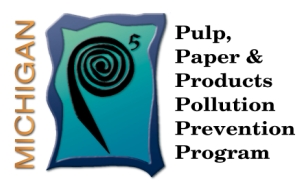
P5 Program, Goals and Objectives
The Pulp, Paper and Products Pollution Prevention (P5) Program’s mission is environmental improvement in concert with sustainable economic growth. The P5 Program utilizes the waste minimization hierarchy of source reduction, recycling-reuse, treatment, and disposal, including actions implemented in response to regulations. The goals and objectives are described below.
Program Goals and Objectives
- Work with members to identify environmental substances of concern and establish priorities and goals for the reduction of their use, generation, discharge or emission. The basis for determining which activities to pursue will be based on their environmental impact and economic and technical practicality.
- Support the National Council for Air and Stream Improvement (NCASI) in its duties as a technical “clearinghouse” for member submittals of the environmental data. Based on this environmental data, industry-wide reports will be prepared jointly released by the Michigan Department of Environmental Quality and the forest products industry.
- Work to introduce initiatives, publications, and/or outreach activities directed toward the forest products industry in the Great Lakes States and the Province of Ontario.
- Develop and distribute case studies with P5 members to enhance technology transfer between members. Technology transfer activities shall be subject to business confidentially and anti-trust regulations.
- Promote pollution prevention information and technologies through all means available (e.g. meetings, mailings workshops, conferences, email offerings, and website. Any regulatory impediments to pollution prevention will be identified and addressed.
- Promote further integration of P5 program objectives with other applicable pollution prevention partnerships, programs and initiatives.
The Pollution Prevention Partnership (P5) between the Michigan Forest Products Council and the Michigan Department of Natural Resources is now in its 10th year.
This noteworthy program features objective driven performance and state-of-the-art management systems to reduce emissions and improve environmental quality.
Members established 19 long-term goals in 1996 and over the years also set many short-term goals toward improvements in environmental performance. Collectively, efforts to reach these goals resulted in the following impressive accomplishments, expressed in an annual basis:
Of the 19 long-term goals originally set in 1996; 12 have been met or exceeded, 4 were nearly attained, and significant program has been made to the remaining 3. Member paper mills accomplished significant reductions in the following areas (adjusted for production)
- Air Emissions Reductions……………………………….4.660 tons
- Water Use Reductions……………………………………2.28 billion gallons
- Water Emission Reductions……………………………..10,200 tons
- Reduction in Hazardous Materials Usage……………….8,620 tons
- Reduction in Hazardous Waste Generation…………………31 tons
- Beneficial Use of Wastewater Treatment Solids………..140,000 dry tons
- Beneficial Use of Other Byproduct Solids………………..37,100 tons
When trends in environmental performance are examined over a 10-year period, the efforts of P5 Program members have yielded the outstanding results noted below (adjusted for increased pulp and paper production):
- Air emissions reduced by 33 percent
- Substances discharged in wastewater reduced by 40 percent
- Wastewater volume reduced by 22 percent
- Hazardous waster generation reduced by 51 percent
- Solid-waste land-filled reduced by 42 percent
This is quite an accomplishment for an industry that is already in compliance with state and federal regulations.
The decade-long success of the P5 Program is a tribute to the nearly 154,000 men and women who comprise the state’s forest products industry.
Over the past 13 years, this program has been extremely successful in meeting its goals. This success is attributable to the dedication of the Michigan Pulp and Paper Environmental Council’s Members and the continued support of the Michigan Department of Natural Resources and Environmental –Environmental Science and Services Division (MDNRE-ESSD). It is also a testimonial for voluntary, cooperative programs between the public and private sectors. The Michigan Forest Products Council, the industry’s trade association, coordinates the P5.
In 2008, P5 Program members embraced a new environmental initiative committing to the development of mill-specific mercury minimization plans as an industry wide goal. More recently, MPPEC began promoting the next generation in pollution prevention, working toward the adoption of mill-specific Environmental Management Systems.
In addition to voluntary discharge reductions, the forest products industry is supportive of the Sustainable Forestry Initiative (SFI) “green certification” program. SFI is designed to assure healthy forests and products not only for today, but for future generations as well.